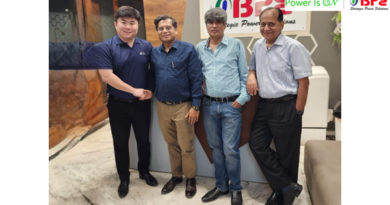Identify the root cause of particle contamination for automotive electronic components
Mastering failures caused by particle contamination
Production processes, the production environment, and the final packaging all have an influence on component cleanliness. As a result, compliance agreements with limiting values often
need to be implemented between the customer and supplier or between product development and production. This means that the cleanliness requirements are not fixed and can be specifically
chosen by the customer in accordance with the product geometry function, manufacturability, and verifiability of the component. Technical cleanliness is attracting increased attention in industry
because it promotes the efficiency and effectiveness of individual industrial products. Not only does it begin with the suppliers at the very start of the production chain, it is applicable to all industries – covering everything from implants in the field of medical technology, engine components and assemblies in automotive to fuels and lubricants aerospace. Particulate contamination may impair performance in the automotive industry by migrating from previously non-critical areas to sensitive locations such as semiconductors, with metallic and non-metallic particles that
gather on these parts causing the car to malfunction or even stopping the engine. This paper specifically addresses particle contamination on an electrical component within an automotive
application.
Short circuits caused by conductive particle contamination:
One of the potential causes of a short circuit is a contaminated component. The following scenario sees a short circuit occur when the electronic circuit is interrupted by various materials. In this experiment, ZVEI (German Electrical and Electronic Manufacturers Association) investigated whether particles on the traces influence the current flow of the traces. A particle is placed over two adjacent traces, and the DC voltage between the traces is increased from the starting point V1 up to 60 V in increments of 1 V. Each voltage point is applied for 5 seconds. The current of the voltage source is limited to 2 mA. If the current flow is insufficient, the currently applied voltage is noted as breakdown voltage or step voltage. This process was repeated until 25 breakdowns were reached.
The quality solution: technical cleanliness. But what is technical cleanliness?
Technical cleanliness is a two-stage procedure that uses a light microscope to examine the number and size of particles present, followed by an electron microscope to confirm the chemical composition and origin of the particles. It therefore seeks to eliminate system failures that could potentially be caused by these particles. The necessary level of technical cleanliness is determined on the basis of the particle-sensitive points on the system in question. The relevant particles may also differ in character – while combustion engines typically encounter hard and abrasive metallic particles, electronic engines can be susceptible to low- and high-conductivity particles. Most particles are generated during the processing of components and assemblies (approx. 80%) and only a fraction (approx. 20%) are due to environmental influences. Since manufacturers cannot address every possible malfunction and manufacturing process, the aim here is to focus on metallic particles. When it comes to PCBs, any metallic particles that measure> 200 μm or more present a potential risk of electrical short circuit. If the metallic particles are of a certain length, angle and position, and they land on the PCB in a particular way, they can cause a short circuit. This is what makes it important to find these critical particles and detach them from the PCBs. Since there is no such thing as total cleanliness or purity, then the focus should be on the most practically feasible and economically viable solution for the designated location and purpose. Particle contamination has been a growing problem for the automotive industry since the early 1990s, when systems started becoming increasingly complex and installation spaces ever smaller. VDA 19/ISO 16232 was therefore established as a standard for enabling customers and suppliers to address the risk of potential damage of products across the production chain. In the electronics industry, VDA 19 does not specify any limiting values for component cleanliness. These must be defined according to component function, producibility, and verifiability. When residual contamination is sufficiently low, the system is considered adequately clean.



